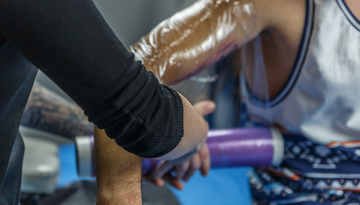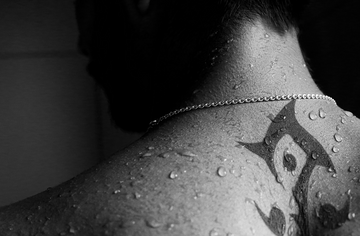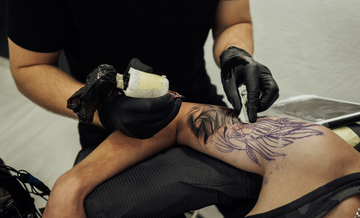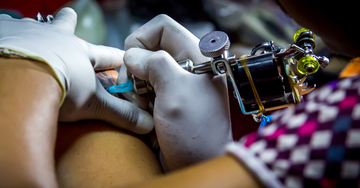When you get a new tattoo, proper aftercare ensures it heals well and maintains its vibrant design. One popular aftercare product is Second Skin, a breathable, transparent adhesive bandage that protects your tattoo during its most vulnerable healing stage. But how long should you keep it on? Let’s explore the details to help you care for your ink like a pro.
What Is Second Skin for Tattoos?
How Second Skin Works
Second Skin acts as a barrier between your fresh tattoo and the outside world. Made of medical-grade adhesive film, it:
- Shields your tattoo from dirt, bacteria, and friction.
- Locks in moisture to promote faster healing.
- Prevents scabbing and cracking.
Its breathable design allows oxygen to pass through while keeping moisture in, creating the perfect environment for healing.
Popular Brands and Products
While Second Skin is a specific brand, many products serve the same purpose, including:
- Saniderm
- Tegaderm
- Recovery Derm Shield
These products are widely recommended by tattoo artists for their convenience and effectiveness.
Benefits of Using Second Skin for Tattoo Healing
Faster Healing and Reduced Scabbing
Traditional tattoo healing involves scabbing, peeling, and itching. Second Skin minimizes scabbing by keeping the area hydrated, which can lead to faster and smoother healing.
Protection Against Contaminants
A fresh tattoo is essentially an open wound. Second Skin provides a sterile barrier that prevents dirt, bacteria, and other contaminants from entering, reducing the risk of infection.
How Long Should You Keep Second Skin on a Tattoo?
Initial Layer Duration
After your tattoo session, your artist may apply the first layer of Second Skin. This layer is typically left on for 24–48 hours. During this time, the film will collect fluids like plasma, ink, and lymph, which are normal during the initial healing phase.
- If it leaks or feels uncomfortable: Remove the film sooner and replace it with a new layer.
Replacement and Long-Term Use
Once the first layer is removed, you can apply a fresh layer of Second Skin. The second layer can stay on for up to 5–7 days, depending on your tattoo’s size, location, and healing progress.
- Smaller tattoos: May only need 3–5 days of coverage.
- Larger tattoos: Might benefit from keeping Second Skin for the full 7 days.
It’s essential to follow your artist’s instructions, as every tattoo and skin type is unique.
How to Properly Apply and Remove Second Skin
Application Tips
- Clean the Area: Gently wash the tattoo with antibacterial soap and pat it dry.
- Cut to Size: Trim the Second Skin to fit your tattoo, ensuring a half-inch border around the design.
- Apply Evenly: Avoid air bubbles by applying the film smoothly, starting from one side and pressing it down gradually.
Safe Removal Techniques
- Peel Slowly: Remove the Second Skin from one corner, pulling it back gently at a 180-degree angle.
- Use Warm Water: Running warm water over the film can help loosen the adhesive for a smoother removal.
- Moisturize After Removal: Apply a tattoo-safe moisturizer or ointment to keep the area hydrated.
Common Questions About Second Skin
Can You Shower with Second Skin?
Yes! Second Skin is waterproof, so you can shower without worrying about your tattoo getting wet. However, avoid prolonged exposure to water, like swimming or soaking in a tub, as it can weaken the adhesive.
What Happens If It Comes Off Early?
If the Second Skin peels off prematurely:
- Wash the tattoo gently with antibacterial soap.
- Pat it dry with a clean towel.
- Apply a fresh layer of Second Skin or switch to a traditional aftercare routine using a healing ointment.
Using Second Skin for tattoo healing is a game-changer, offering protection and convenience while speeding up the recovery process. By following the recommended time frames and proper application techniques, you’ll ensure your tattoo heals beautifully and retains its vibrant appearance.





